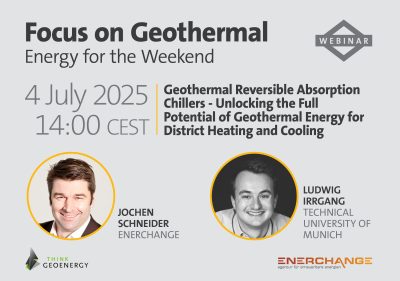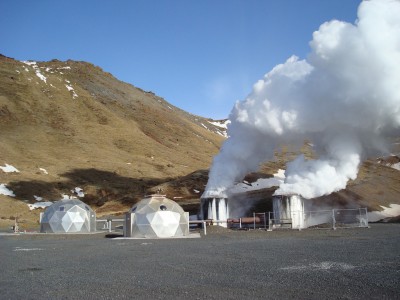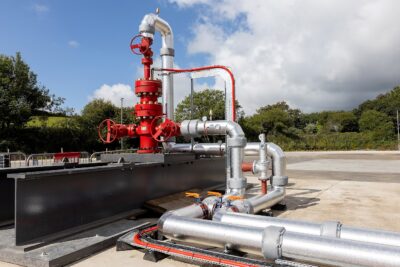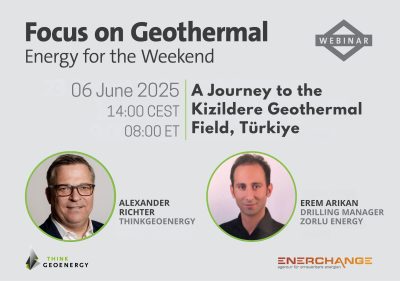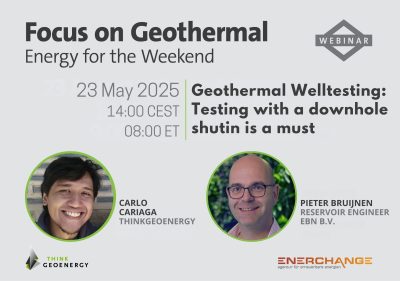New study presents updated geothermal drilling cost curves
A study published by Akindipe and Witter presents a new geothermal drilling cost curve based on drilling performance by Fervo Energy, Utah FORGE, and GPC.
A study presented by Dayo Akindipe and Erik Witter from the National Renewable Energy Laboratory (NREL) at the 50th Stanford Geothermal Workshop held in February 2025 provides an updated drilling cost curve based on recently reported drilling results by Utah FORGE, Fervo Energy, and Geysers Power Company.
Click here to access the full paper “2025 Geothermal Drilling Cost Curves Update”.
Recent projects set new industry-leading drilling rates
The study updates the Well Cost Simplified (WCS) model initially produced in Sandia (Lowry et al, 2017) and updated in 2022 by NREL.
The paper cites four specific projects in setting a new baseline for geothermal drilling performance. These include the Project Red and Cape Station projects of Fervo Energy, the drilling of the 16(B)78-32 production well by Utah FORGE, and the drilling of the GD-36 well by the Geysers Power Company (GPC).
These projects were considered to have recorded remarkable improvements in rates of penetration in hard rock, which have translated into industry-leading drilling rates. Drilling performance improvements have been driven by the increased use of polycrystalline diamond compact (PDC) bits, inter-/intraproject learning (El-Sadi et al. 2024), and technology transfer from the oil and gas industry, including the implementation of the physics-based rate limiter redesign technique (Dupriest and Noynaert 2022, 2024) and multiwell pad drilling (Norbeck et al. 2024).
Updated drilling performance assumptions
Based on the successes of the cited projects, the study proposes updated parameters that can be used as assumptions for the baseline drilling cost curve. For instance, an average ROP of 75 ft/hr was proposed, which is a significant improvement from the 25 ft/hr average of the original 2017 model.
New technologies have also allowed for higher casing running speeds, resulting in an average of 800 feet/hour or 20 joints/hour. There is some expected variation based on casing size and the familiarity of the drilling personnel. However, the assumed average improves on the 300 feet/hour average of the original model.
With PDC bits now being the typical bit of choice for hard rock drilling, the bit cost multiplier has been increased from 1 to 2 for the updated drilling cost curve. The original 2017 model assumed that all rotary drilling will be done using roller cone bits. There is some expected variation based on bit size and whether the bit can be repaired after the bit run.
An average bit life of 50 hours was assumed for the new cost curve, which is the same assumption made by the old models. The previous figure was retained as all case study projects reported that the bits were pulled out before significant wear had occurred. This means that bit life is more of an optimization variable, rather than a hard technical limit.
Finally, a lower contingency factor was applied to the new drilling cost curve. The authors argue that improvements in drilling efficiency and advances in MWD/LWD tools means there will be less trouble time and/or nonproductive time. Thus, a reduction of the contingency factor from 15% to 10% was implemented.
Cost reduction for both vertical and horizontal wells
Based on the drilling data and corresponding assumptions, the authors generated new geothermal drilling cost curves. Several curves were presented, representing both horizontal and vertical drilling of both small-diameter and large-diameter wells.
In summary, the revised drilling curves indicate that drilling costs have decreased from the 2017 baseline by 12% to 24% for vertical wells and 18% to 26% for horizontal wells.
The results of the study justifies the need to update the baseline drilling cost curves used by models that estimate the costs of geothermal power such as the Geothermal Electricity Technology Evaluation Model (GETEM) and the System Advisor Model (SAM). Incorporating the revised curves will improve the accuracy of geothermal cost estimation in these models and corresponding derivative analyses, such as resource supply curves evaluation, capacity expansion modeling, and workforce development assessment.
Source: Stanford Workshop Proceedings







